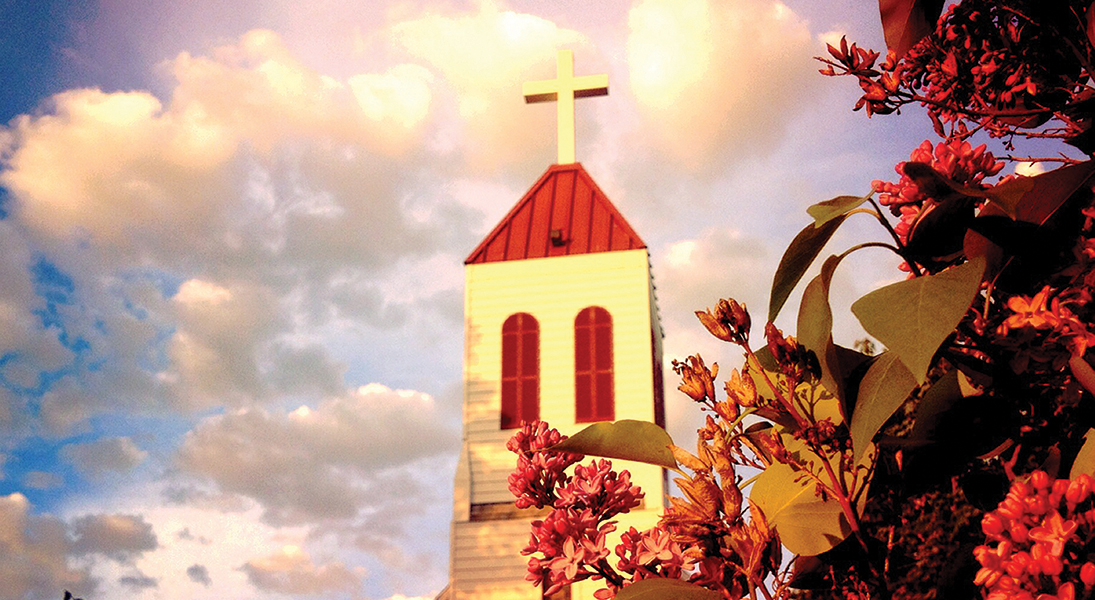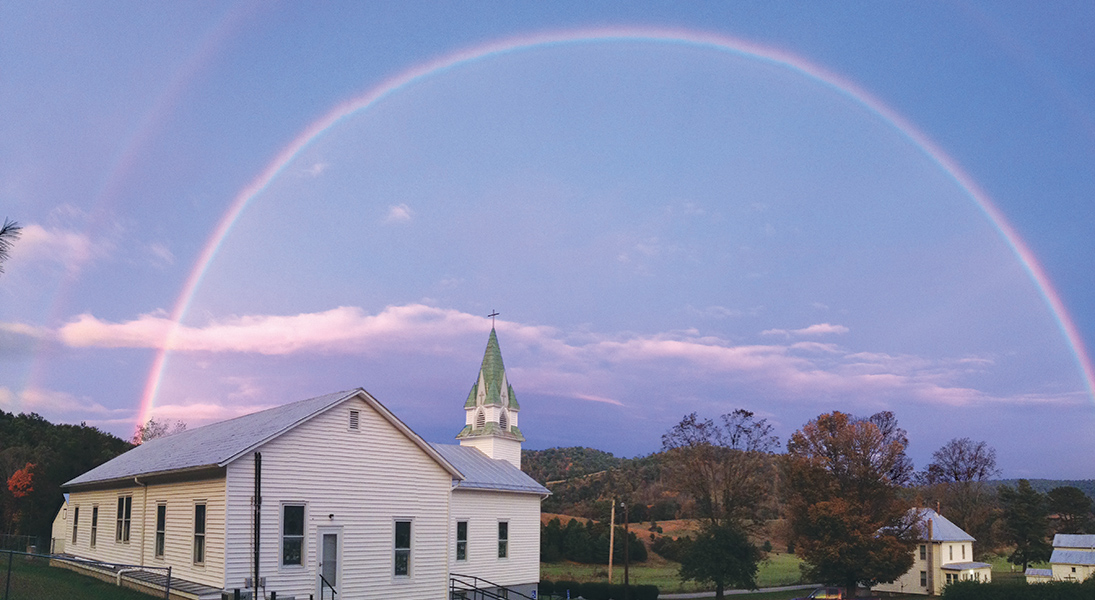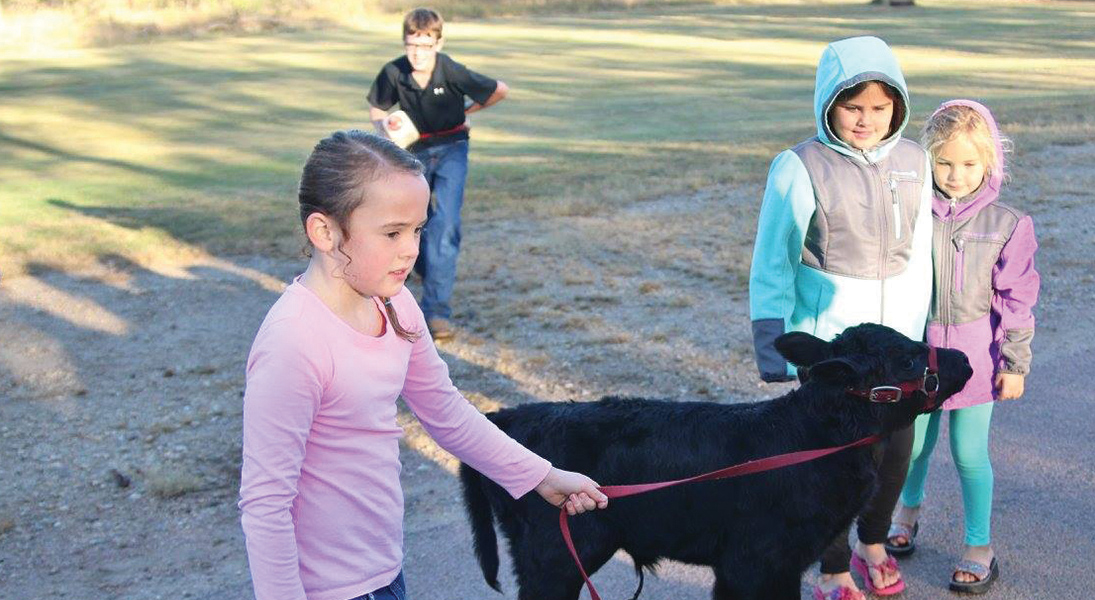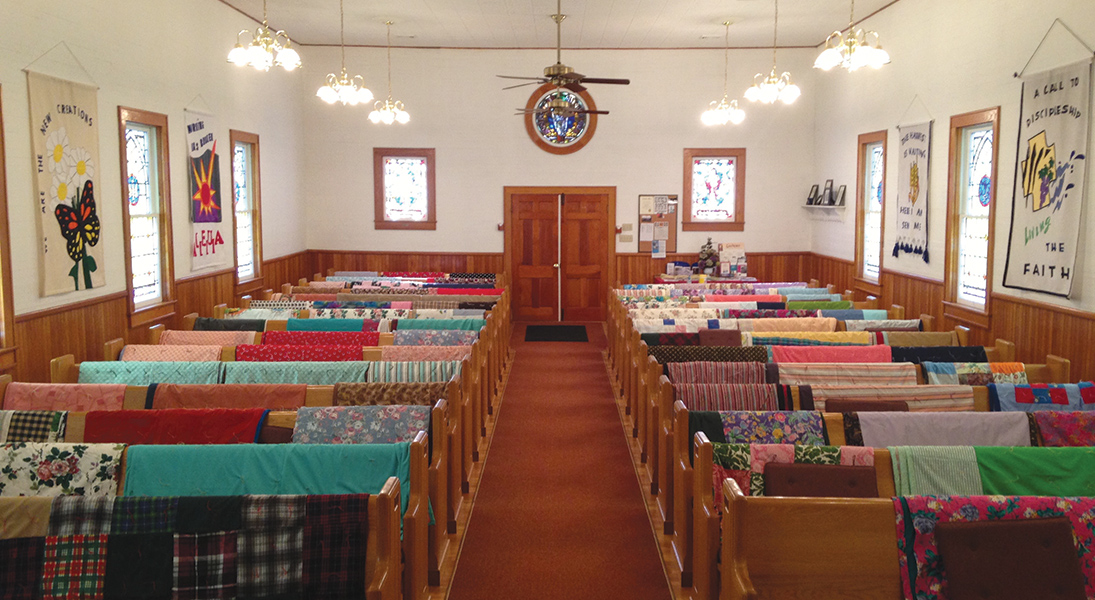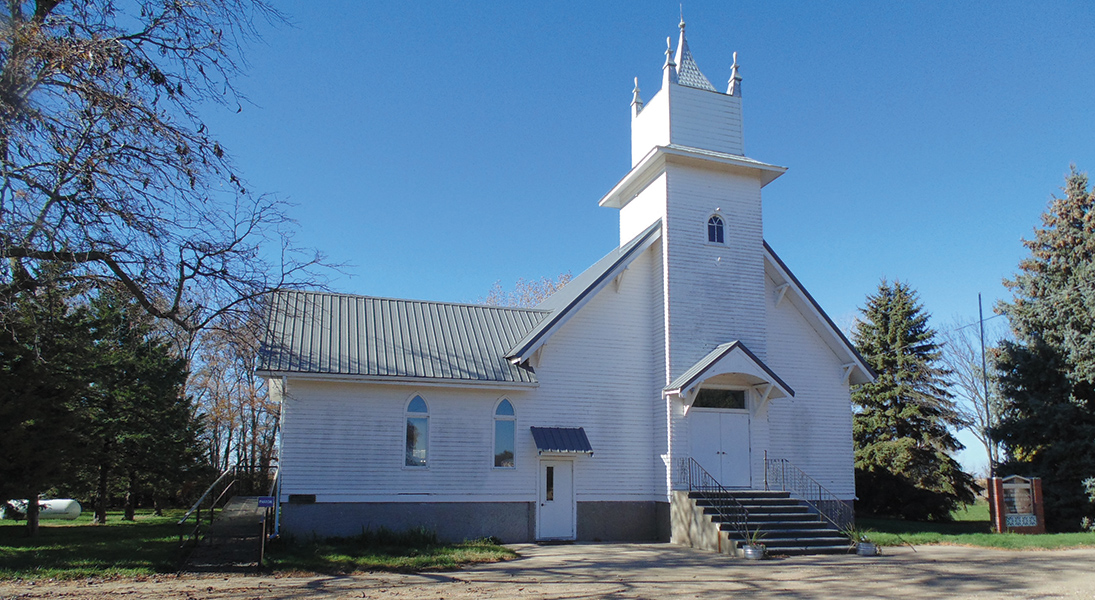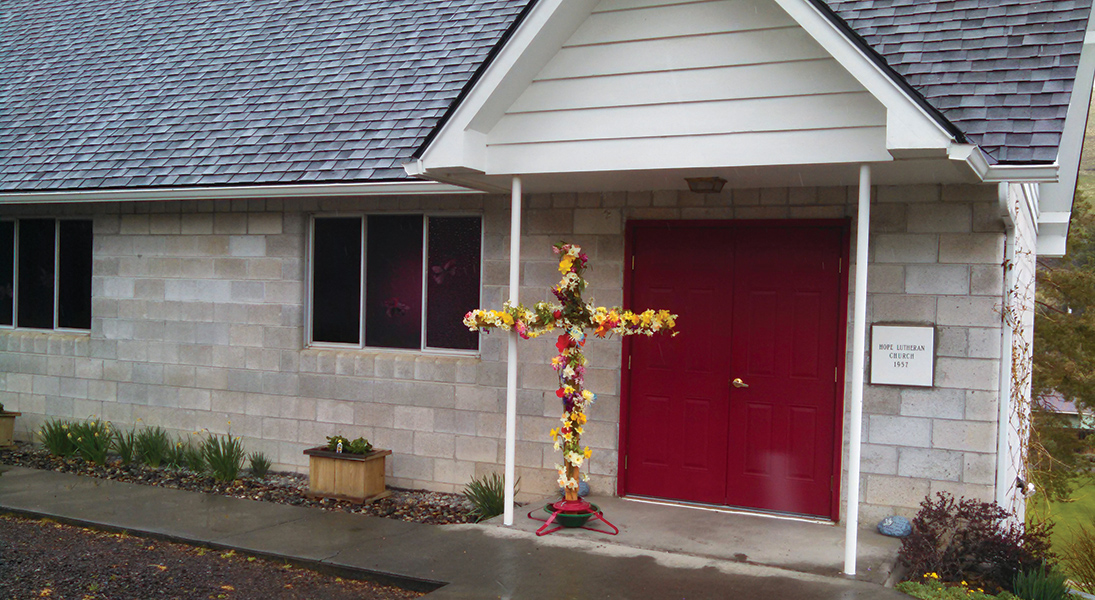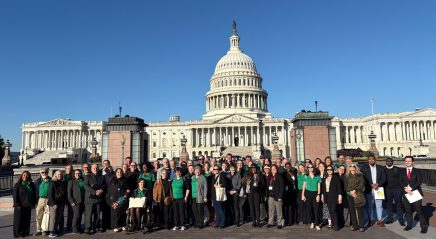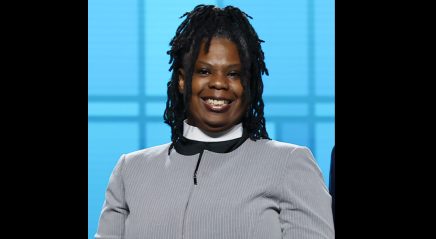As she was on her way to her first worship service of the morning, Jess Felici, a pastor of Mountain Lutheran Parish, received a phone call from a member saying worship was canceled. Why? It was skunk mating season and the sanctuary fell way to the animals’ unfortunate fumes, making it too smelly to be in the church for worship.
After she stopped by the church to attest to the circumstances herself, Felici decided to use the extra time to visit the home of some members. She had planned on sharing a cup of coffee and conversation in their living room, but instead found them all in their chicken house dealing with a rooster feed situation.
What Felici thought would be a typical morning worship service turned into coffee in a chicken house picking eggs. “If that doesn’t give a good description of rural ministry!” she said.
Felici serves a five-point parish in rural West Virginia, the heart of Appalachia, with her husband, Jason. They spend their time going back and forth between Mount Hope in Upper Tract, Faith in Franklin, St. John in Moyers, Calvary in Brandywine and New Hope in Minnehaha Springs.
“We have all sorts of wonderful experiences here that you don’t have the opportunity to do outside of rural ministry,” she said. “You could be spending Saturday at a farm meeting baby lambs, worship on Sunday and hospital visits that evening. There is no set schedule and every day is a wild adventure.”
A changing landscape
The ELCA has a long history of ministry in rural areas. Rural congregations rank as the highest percentage (28.1) of ELCA churches compared to other population demographic segments.
Alvin Luedke is a professor of rural ministry at Luther Seminary in St. Paul, Minn., who has served as a pastor in a rural setting. He’s witnessed the changes occurring in rural America over the past few decades, and while rural congregations are still the majority of ELCA churches, he says they’ve been affected by challenges brought on by this changing context.
“We have some congregations that are in very economically distressed regions—the towns are declining,” he said. “Some of our agricultural areas are declining because of consolidation of farms and becoming more commercialized.
“There has been a lot of consolidation in other industries within many of our communities too. A lot of school districts have had to consolidate. Many of our services have been consolidated—rural hospitals have had to join a network and community banks have had to consolidate into a larger bank.”
These changes have resulted in some people, most notably the younger generations, leaving their rural homes to find work in more metropolitan areas. This has led to an aging and declining population in rural America, which is reflected in ELCA congregations.
These changing demographics can present challenges related to various aspects of the congregation’s life, but the most articulated concern is finding and keeping a pastor. Members worry that their town won’t be appealing to a new pastor or could cause challenges for someone whose spouse might not be able to find work in the community.
“I think people worry when a pastor leaves that they aren’t going to be able to replace [that person],” said Nancy Eckels, who serves a two-point congregation in rural South Dakota (Storla in Letcher and Salem in Mount Vernon) while on her internship during seminary at Luther. “Even if they are very healthy congregations, very mission-minded and know what they’re here to do, I think in all these rural churches there is an underlying sense of the concern of the future of their church. That needs to be acknowledged and affirmed.”
Eckels said this means congregations are thinking differently about how they are church, and she’s one example. Even though she’s on her internship, Eckels is the only person serving the two congregations since they currently have no called pastor. “Now they are a teaching congregation,” she said. “I’m so impressed with how they’re willing to think out of the box and take on a new vocation as a congregation.”
For some, together is better
Despite the challenges of rural population decline, there is a lot of vitality in rural congregations, said Bill Tesch, the South Dakota Synod’s director for evangelical mission.
“Congregations that are thriving are those that have decided to see these changes not as a catastrophe but as something God is up to,” he said. “There are still gifts that God has given that are to be used for the sake of ministry. Congregations are recognizing and celebrating that, even if they are almost all a little smaller than they were 30 years ago.
“In some cases, they are more vital in their terms of mission and the way they are making serious disciples and not simply members of an organization.”
In most cases, Tesch said, the rural congregations he considers to have the most vitality are those that have entered into a cooperative ministry or multipoint parish, like the ones Eckels and the Felicis serve.
Multipoint parishes have become increasingly prevalent over the past couple of decades as an option for congregations that know they can no longer afford their own pastor.
“Where these work best is when the congregation looks at this as an opportunity to see what more can we be doing in ministry as a partnership that we can’t do alone,” Tesch said. “When they take a missional approach toward it instead of desperation, they do better.”
Back in West Virginia, Jason Felici said multipoint ministry is something that’s long been distinct of rural ministry in Appalachia. The congregations he and his wife serve became a five-point parish in 2012, but three of them have been together since 1946.
“We are used to sharing here,” he said. “We are so remote as a region, it’s the way of life here. There are stories of preacher circuit riders who would hop on the freight train to get to their next service. It’s just a reality that the churches here have never been large enough to support a pastor on their own.”
Some partnership ministries leverage the ELCA’s relationship with full communion partner churches. Katy Anderson is pastor of All Saints Episcopal and Hope Lutheran, a cooperative ministry in Heppner, Ore.
“Rural ministry necessitates cooperation among denominations,” Anderson said. “In cities, Lutheran churches can join forces across town. But in rural areas, I expect that the survival of mainline Protestant churches will depend on their willingness to partner with other denominations. Being exclusively Lutheran pales in importance to being inclusively Christian.”
Further proof that there is no one answer for rural congregations during these changing times, St. Peter Lutheran in Audubon, Minn., is going its own direction.
Established in 1893, St. Peter has been yoked with congregations for most of its history. Before Ruth Hetland was called as pastor two years ago, the congregation decided to take a “leap of faith” and call their own pastor.
“They missed having their own pastor in a lot of ways, so they wanted to give it a try,” Hetland said. “A few people were skeptical, but the congregation was committed and it’s been working and we’ve been growing.”
Leading the way
Lay leaders can be particularly needed in rural congregations. Multipoint parishes turn to lay leaders to fill roles that a pastor serving one congregation might otherwise do.
“Lay leadership is always critical, but more so in these shared arrangements because of the diversity of congregations in the arrangement and the inability of the pastor to be there as much,” Luedke said. “Lay leaders will often handle things like Sunday school and fellowship opportunities. They’re also going to be much more in tune to the property because it will be on them to maintain it and the building.”
Jason Felici said, “At our churches we don’t get to church until after the worship service has started or we leave before the worship service ends in order to make our circuits work, so we have lay leaders help begin the worship service and do announcements.”
He also noted that declining population in rural areas can cause a drain on lay leaders. “One specific challenge here is that the people who are really active at church are the same people who also run the rescue squad and are part of the volunteer fire department,” he said. “That’s a blessing, but it’s also hard on folks. And it can be hard if you want to add something new because people are already juggling a lot.”
The trend in aging rural populations can have an impact on church lay leadership roles too. At St. Peter, Hetland said finding someone to usher or help with Sunday school can get a little tricky after October as many of the congregation’s older members move south for the winter.
This land was made for you and me
While rural areas might be shrinking in population, they aren’t lacking in community—and church is often at the center.
“It’s a joy that church is still a really important part of the fabric of the community,” Jason Felici said. “We can call the local paper with information about service times and it will show up on the front page of the paper for free.”
This sense of community also means pastoral care might look a little different from a suburban or urban context. For the most part, it takes place out in the community.
“We try to tie into what’s already happening in people’s lives,” Jess Felici said. “We try to get to sporting events here, like football or basketball games. We also have people over for supper to talk about issues so we are contributing to their family time rather than taking away from it.”
Jason Felici also said that office hours don’t really exist in rural ministry. “Here, the office is less of a priority for folks while us being out and about in the community, visiting in homes, is much more important and is often more fruitful,” he said. “For most of our colleagues in the region and in rural settings, our parsonage—our home—is our office. They say the pastor always has to be on, but that’s not true anywhere more than rural ministry.”
Anderson also acknowledges the unique closeness that can be found in rural areas. “In rural ministry, most people have a long history with each other. You run into members—and prospective members—at the grocery store and post office just about every day,” she said. “Funerals are standing-room-only events and whenever there’s a need anywhere in the community, people are incredibly generous.”
Luedke said he tries to make seminary students, who currently mostly come from urban and suburban backgrounds, aware of these nuances of rural life.
“They need to be ready to do pastoral care in all of these contexts,” he said. “And in some rural agricultural areas, they even need to be ready to do pastoral care while riding in a combine.”
While rural congregations might be in isolated parts of the country geographically, their members feel deeply connected to the wider church and their ministry in the world.
“They dedicate a lot of time and commitment to taking care of those who are hungry and marginalized,” Eckels said of the congregations she serves in South Dakota. “They do a lot of mission work in the local community and in the larger church, and they’re very committed to the goals of the ELCA as far as mission goes.”
Though rural ministries may no longer look like the congregations that originally formed them, those who live in them say the joys far outweigh any challenges.
“Of course there are challenges with the changing times, but there are really beautiful things happening. People want to pass the faith to the next generation and are finding unique and surprising ways to do that,” Hetland said. “There is not a sense of fear but a sense of excitement, of saying, ‘Let’s see where the spirit moves.’ ”
Jess Felici agrees: “We are so deeply cared for by our congregations. I think if pastors knew how good life is here, there would be more competition for these calls and people would be knocking on our doors asking when they can have their turn.”



